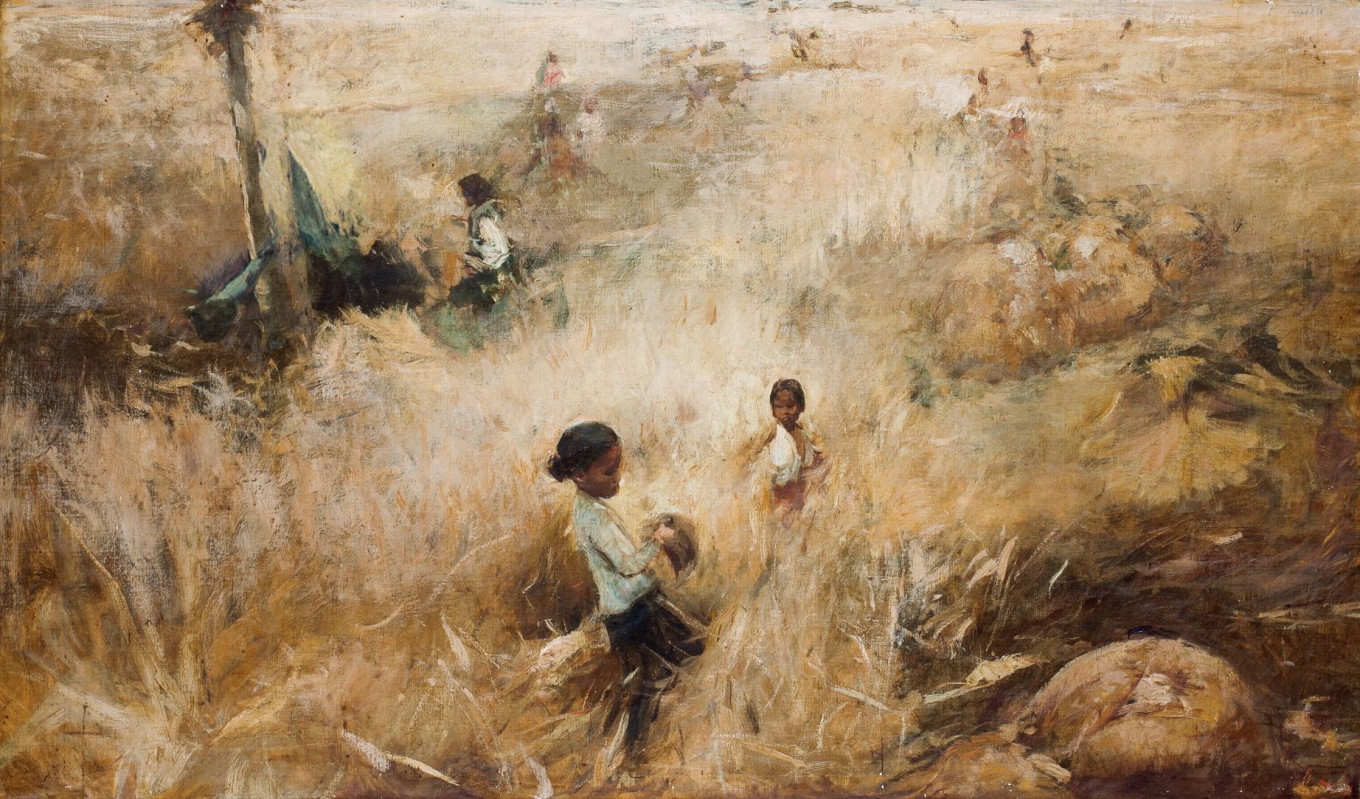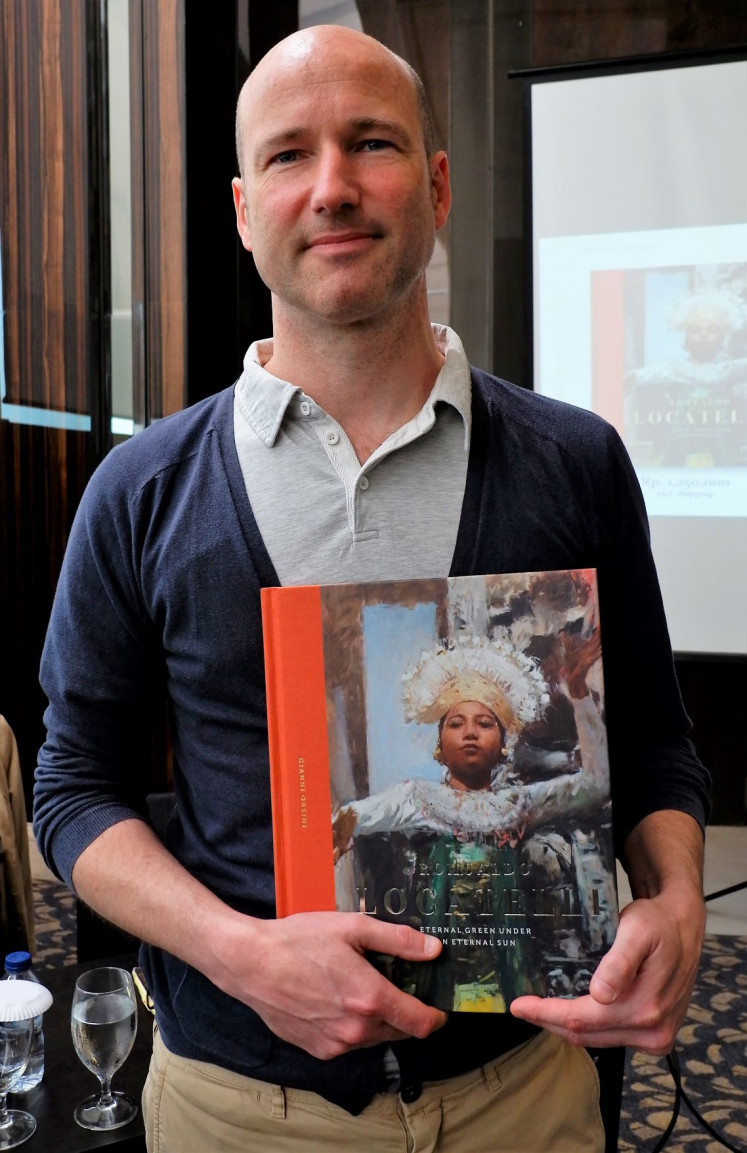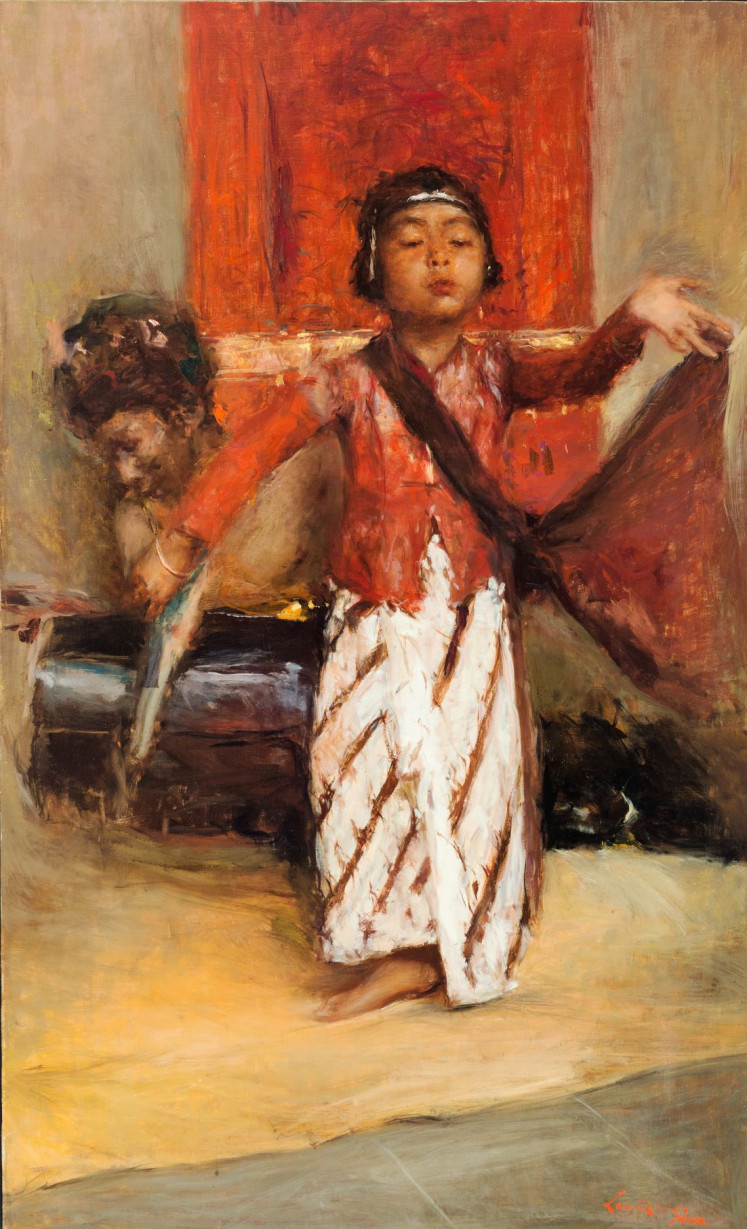Popular Reads
Top Results
Can't find what you're looking for?
View all search resultsPopular Reads
Top Results
Can't find what you're looking for?
View all search resultsIndonesia through eyes of Italian artist Romualdo Locatelli
For Italian maestro painter Romualdo Locatelli, Indonesia was heaven on earth, a new book reveals.
Change text size
Gift Premium Articles
to Anyone
F
irst president Sukarno was a big fan of Italian maestro Romualdo Locatelli, who lived in the Dutch East Indies, now Indonesia, in 1939.
Learning of the rarity of original paintings by Locatelli and other renowned artists in Indonesia, the president asked a number of rising young painters, including Trubus Soedarsono, to replicate them in the 1960s.
His purpose was not forgery, but to introduce Indonesia’s art scene to the world through copies of his collection.
Sukarno fell for him after seeing two Locatelli paintings at the Presidential Palace in Jakarta and the Bogor Palace in West Java. However, he never had a chance to meet the Italian artist as Locatelli went missing in the Philippines in 1943 under mysterious circumstances.
The two paintings – Harrowing a Field in Java in the Presidential Palace and Reaping Rice in the Bogor Palace – were exhibited at the National Gallery in Jakarta two years ago.
These two are among the 38 paintings featured in a new book, Romualdo Locatelli: Eternal Green under an Eternal Sun.
Biography: Author Gianni Orsini holds his book on Italian artist Romualdo Locatelli. The book includes details on Locatelli’s brief yet eventful time in Southeast Asia. (A. Kurniawan Ulung/-)Written by Dutch author Gianni Orsini, it is a biography of the Italian artist, which includes the details of Locatelli’s brief yet eventful stay in Southeast Asia during the World War II era.
“The title sounds a little bit poetic. It was actually Locatelli’s own description of Java,” Orsini said in a discussion held at the book’s launch during the recent Art Moments Jakarta fair.
Orsini said Locatelli was once asked about his feelings for Java in an interview. His answer was that he was blown away not only by the beauty of the landscape of the island but also by its friendly and lovable people.
“Java is a paradise”, Orsini quoted Locatelli as saying. “As indeed it is: eternal green under an eternal sun, and the people wearing the sun’s smile on their faces always. Truly, I feel as if in paradise.”
Locatelli's paintings from Java and Bali are by far his rarest and thus most expensive and sought-after works.
Orsini, who spent five years researching and finishing the book, said that Indonesian painters, including maestro Basoeki Abdullah, looked up to Locatelli. When holding a painting exhibition in 1947, reporters suggested that Basoeki had been inspired by Locatelli’s work.
Born on April 4, 1905 in Bergamo, northern Italy, Locatelli grew up in an artistic family. From when he was a teenager he helped his father, fresco and decorative artist Luigi Locatelli, in creating fresco paintings in churches.
He then studied art at the Academia Carrara in Bergamo. In 1925, the career of the 20-year-old Locatelli as a portrait painter took off in Italy. He was then nominated for the Prince Umberto Grand Prize, a prestigious award for artists in Italy.
He liked to paint indigenous people while traveling throughout Italy and North Africa. He was later renowned in his home country for painting senior Italian religious, royal and political figures.
In an exhibition in Rome in 1938, he was asked by Dutch people who lived in Bandung, West Java, to come over to the Dutch East Indies to paint portraits and landscapes.
With his wife, he arrived in Batavia, now Jakarta, in January 1939 and later moved to Bali. In July 1940, they went to Manila in the Philippines.
“It was in Manila that he tragically disappeared at the age of 37 in very mysterious circumstances,” said Orsini, a graduate of Delft University of Technology.
Locatelli had no political engagement, but he may have been mistakenly regarded a spy in the political turmoil in the Philippines during World War II. Orsini assumes he was detained, but who seized him remained a mystery.
Orsini, who has researched Indonesian paintings by Western artists for 20 years, said the main challenge he faced during the process of writing the book was to actually find Locatelli’s paintings.
During his time in Southeast Asia, Locatelli was prolific. “He could do three paintings in a week,” Orsini said.
Many of Locatelli’s paintings, however, were lost or destroyed, particularly in the attack that Japan launched on the Philippines in 1941, which destroyed a warehouse in which his work was stored.
In Southeast Asia, an original painting by Locatelli, Portrait of a Young Balinese Girl, can be seen in a gallery in the University of Santo Tomas in Manila, and another, Balinese Dancer, at the Pasifika Museum in Bali.
“In Europe, there are a number of museums that have Locatelli paintings in their collection, but none are exhibited,” Orsini said.
He added that some of Locatelli’s paintings are held by private collectors and not always accessible to the public.
'Javanese Dancer' by Romualdo Locatelli (Courtesy of Gianni Orsini/-)One of Locatelli’s most important paintings in private hands is The Dancing Girl Ratini, which has been renamed Javanese Dancer.
Orsini assumed the two paintings in the two Indonesian palaces were bought by Dutch nobleman Tjarda van Starkenborgh Stachouwer, who was the last Governor-General of the Dutch East Indies.
He said that according to his research, Stachouwer was among visitors to a Locatelli exhibition at the Bataviasche Kunstkring in 1939.
“These two paintings were among the most expensive Javanese paintings in the Batavia exhibition,” Orsini said, adding that Stachouwer later asked Locatelli to paint his daughters.
After Indonesia became an independent country, these two paintings remained in the palaces. Orsini does not know why this was so, but assumes that Stachouwer was asked to leave the artworks. He was not sure whether Sukarno bought them from the Dutch statesman before he returned to the Netherlands.
The author hopes his book will reignite interest in Locatelli. “His work is frequently targeted by forgers,” Orsini said. (ste)













